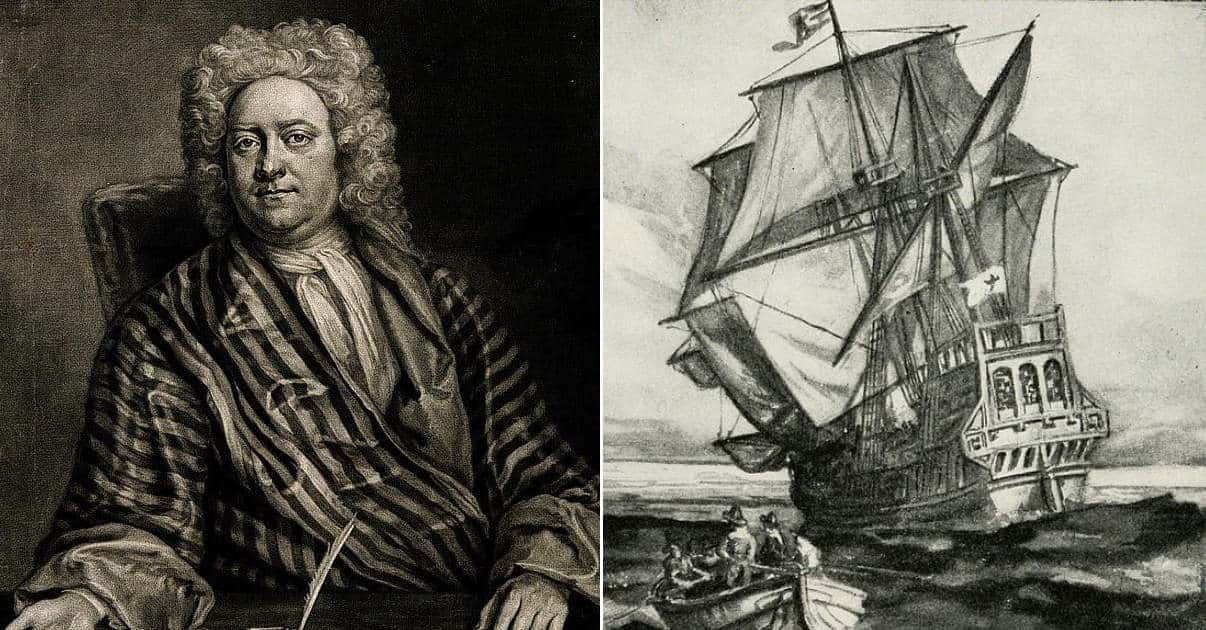The story of the Pilgrims in Massachusetts, which is unfortunately mostly wrapped up in the First Thanksgiving Day, is an interesting tale for many reasons. What isn’t told in the Thanksgiving story is that the Mayflower voyage and the establishment of a new colony in what was to have been Virginia was a commercial enterprise, backed by financial investors who wanted to make a profit. One of the leading investors sailed to the new world in Mayflower and became the colony’s first governor after writing and signing the document we know as the Mayflower Compact.
The story of John Alden is known as a romance involving himself, Priscilla Mullins, and Miles Standish. Alden was critical to the success of the Plymouth Colony but he wasn’t one of the Pilgrims. He was a member of Mayflower’s crew. He later acquired the status as one of the Separatists through the poetic license of Henry Wadsworth Longfellow, himself a direct descendant of John Alden and Priscilla Mullins. Longfellow based his poem on the family oral tradition which was formally published by Reverend Timothy Alden, the founder of Allegheny College, in 1814.

Here are ten of the more interesting passengers and crew who first came to America in the famous ship Mayflower in 1620, and a few of their descendants.

John Carver
John Carver was critical to the voyage of Mayflower and the success of the Plymouth Colony. He was one of the better educated of the Separatists as well as one of the wealthier participants in the enterprise. It was Carver who wrote the Mayflower Compact while the ship was weather-bound in Cape Cod Harbor, and he was the first to sign the document. Carver was elected as governor of the expedition while Mayflower was crossing the Atlantic and he served as the first governor of the colony when the Pilgrims finally went ashore and established their settlement.
Carver’s date of birth is unknown, and the earliest documentation of his existence indicates that he was a member of the Leiden congregation in Holland, where he was a deacon of St. Pancras Church. His first died in 1609, following the death of a child earlier that year. He remarried, to Katherine White, and became involved with the Leiden English Separatist Church. It was Carver who opened negotiations with the Virginia Company to acquire land in Virginia for the establishment of an independent colony for the Separatists. These negotiations began in 1617 and through them Carver agreed to the requirements that the colony would acknowledge the authority of the throne and the Church of England as specified in the Virginia Company’s charter.
Carver arranged for much of the financing for the Mayflower voyage, and put his own money into the enterprise as an investment. He contacted a group of investors in London known as the Merchant Adventurers, led by Thomas Weston, to arrange financial backing. Weston was an ironmonger and somewhat less than scrupulous financier who would at a later date be arrested several times in the English colonies. By the summer of 1620 there was sufficient funding in place and Carver purchased supplies for the voyage and the sustenance of the settlement in Virginia.
Carver boarded Mayflower in the company of his wife, seven year old Jasper More (one of the four More children which Weston had arranged to be sent to the new colony under the care of settlers) and five servants. The ninety foot (by deck length) Mayflower carried 102 passengers and a crew of about 30, although some historians believed for many years that the crew numbered around fifty. The already low provisions were depleted by the multiple delays in sailing caused by the severe weather, and Mayflower didn’t depart English waters until early September 1620, arriving off Cape Cod in November. Unable to sail south to Virginia it anchored in Cape Cod Harbor for the winter.
Carver’s contributions during the grim first winter spent aboard the Mayflower and during the building of the settlement the following spring were many. It was he who negotiated the treaty with the Wampanoag sachem Massasoit which ensured peace between the Pilgrims and the settlers, which in turn led to the success of Plymouth Colony after such a difficult start. Carver was not there to enjoy the success. In April 1621 he collapsed after working in his fields, and died shortly after. His wife died shortly thereafter and his only surviving servant became a free man. Carver was the first of the Pilgrim dead to be buried in a formal ceremony, those preceding him were buried in unmarked graves.

